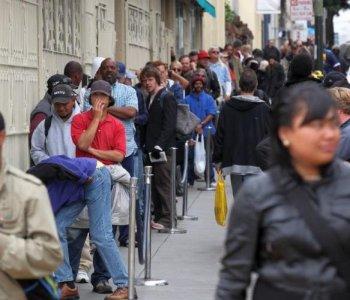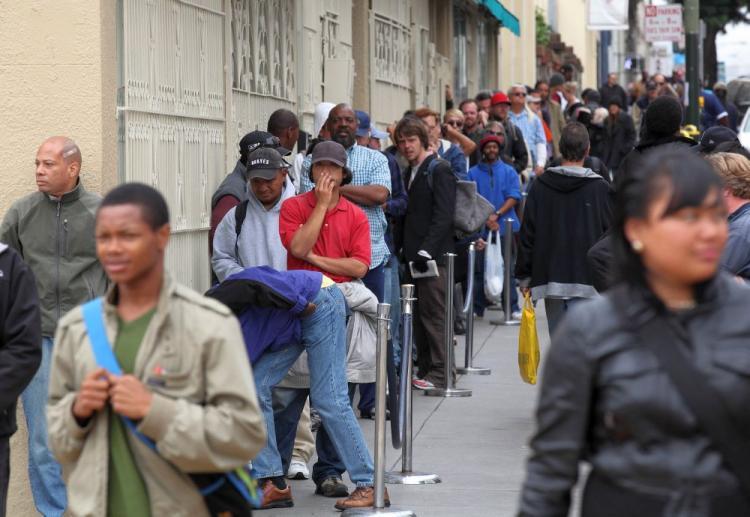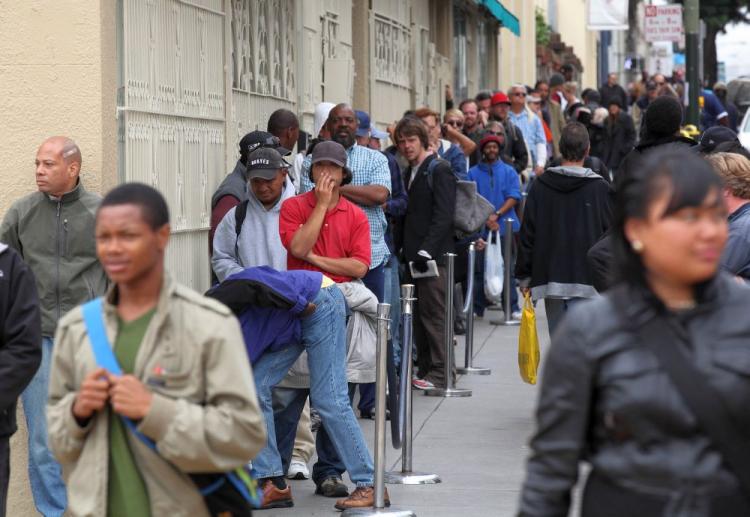Poverty is not exclusive to the nondeveloped world. It exists in the United States and it is a circumstance that more Americans are facing now. The U.S. poverty rate in 2009 was the highest it has been since 1994 according to the U.S. Census Bureau’s Income, Poverty, and Health Insurance Coverage in the United States: 2009 report (PHIC).
The impoverished in the United States have different living conditions from those in the nondeveloped world. For many Americans the concept of poverty in third world countries, like Somalia, evokes frequently seen images of suffering, malnourished children. Although most impoverished Americans do not live in such conditions, they nevertheless deal with the challenges of maintaining their lives with income significantly less than that earned by the rest of the U.S. population.
The official national poverty rate in 2009 was 14.3 percent, up from 13.2 percent in 2008 according the the PHIC report. This figure includes 8.8 million families that live below the poverty threshold. A family of four with two children under 18 years old and an income below $21,756 is considered impoverished according to the Office of Management and Budget’s definition of the poverty threshold. It is adjusted annually based on the Consumer Price Index. A family of two people under 65 years old with no children is considered to be in poverty if their combined annual income is below $14,366.
“These dismal poverty numbers are further proof that an increasing number of Americans are struggling every day to feed themselves and their children, said Vicki Escarra, president and CEO of Feeding America, the largest U.S. domestic hunger relief organization.
The poverty rate increased for all types of families—3.4 million married couples lived below the poverty threshold in 2009, an increase from 3.3 million in 2008. The poverty rate significantly increased for male householder—no wife present families to 942,000 families in 2009 from 723,000 families in 2009.
Non-Hispanic whites were impoverished at a lower rate in 2009 than any other racial group. Asians did not see a significant change in the poverty rate from 2008 to 2009 but the poverty rate increased for all other racial groups.
“We are not really people that have had to rely on others to provide for us. We’re both college graduates, we never thought that this would happen to us,” said Lisa in a video interview posted on the Feed America website. Lisa, a mother of five in Gloucester Massachusetts, sought assistance from a greater Boston Area Food Bank after she and her husband were forced to close their auto repair business.
“There are many people that just need help for a time,“ said Lisa. “As communities we need to start being those people that know our neighbors, and realize that each person, each family has something to contribute to each other.”
Arianna Huffington, founder of the Huffington Post, discusses the decline of the middle class in her recently published book “Third World America.” Huffington shares her perspective on the causes of the decline of the American middle class and offers recommendations to repair the U.S. economy and get people back to work.
“Our financial system is similarly rigged—it’s become a bad carnival game where the rich always get the grand prize and the average American walks away empty handed,” said Huffington in a post on the HuffingtonPost.com.
The impoverished in the United States have different living conditions from those in the nondeveloped world. For many Americans the concept of poverty in third world countries, like Somalia, evokes frequently seen images of suffering, malnourished children. Although most impoverished Americans do not live in such conditions, they nevertheless deal with the challenges of maintaining their lives with income significantly less than that earned by the rest of the U.S. population.
The official national poverty rate in 2009 was 14.3 percent, up from 13.2 percent in 2008 according the the PHIC report. This figure includes 8.8 million families that live below the poverty threshold. A family of four with two children under 18 years old and an income below $21,756 is considered impoverished according to the Office of Management and Budget’s definition of the poverty threshold. It is adjusted annually based on the Consumer Price Index. A family of two people under 65 years old with no children is considered to be in poverty if their combined annual income is below $14,366.
“These dismal poverty numbers are further proof that an increasing number of Americans are struggling every day to feed themselves and their children, said Vicki Escarra, president and CEO of Feeding America, the largest U.S. domestic hunger relief organization.
The poverty rate increased for all types of families—3.4 million married couples lived below the poverty threshold in 2009, an increase from 3.3 million in 2008. The poverty rate significantly increased for male householder—no wife present families to 942,000 families in 2009 from 723,000 families in 2009.
Non-Hispanic whites were impoverished at a lower rate in 2009 than any other racial group. Asians did not see a significant change in the poverty rate from 2008 to 2009 but the poverty rate increased for all other racial groups.
“We are not really people that have had to rely on others to provide for us. We’re both college graduates, we never thought that this would happen to us,” said Lisa in a video interview posted on the Feed America website. Lisa, a mother of five in Gloucester Massachusetts, sought assistance from a greater Boston Area Food Bank after she and her husband were forced to close their auto repair business.
“There are many people that just need help for a time,“ said Lisa. “As communities we need to start being those people that know our neighbors, and realize that each person, each family has something to contribute to each other.”
Arianna Huffington, founder of the Huffington Post, discusses the decline of the middle class in her recently published book “Third World America.” Huffington shares her perspective on the causes of the decline of the American middle class and offers recommendations to repair the U.S. economy and get people back to work.
“Our financial system is similarly rigged—it’s become a bad carnival game where the rich always get the grand prize and the average American walks away empty handed,” said Huffington in a post on the HuffingtonPost.com.




